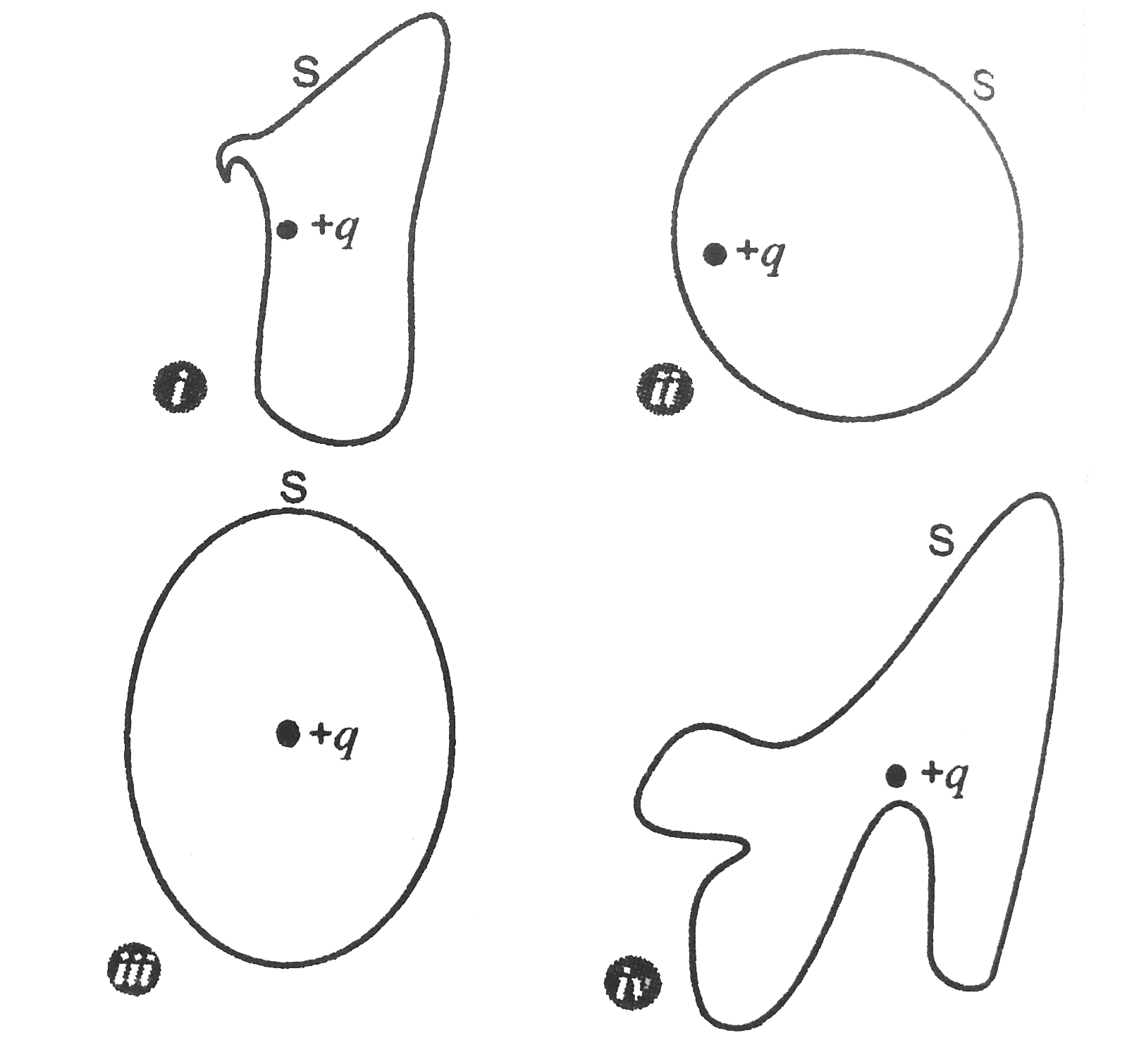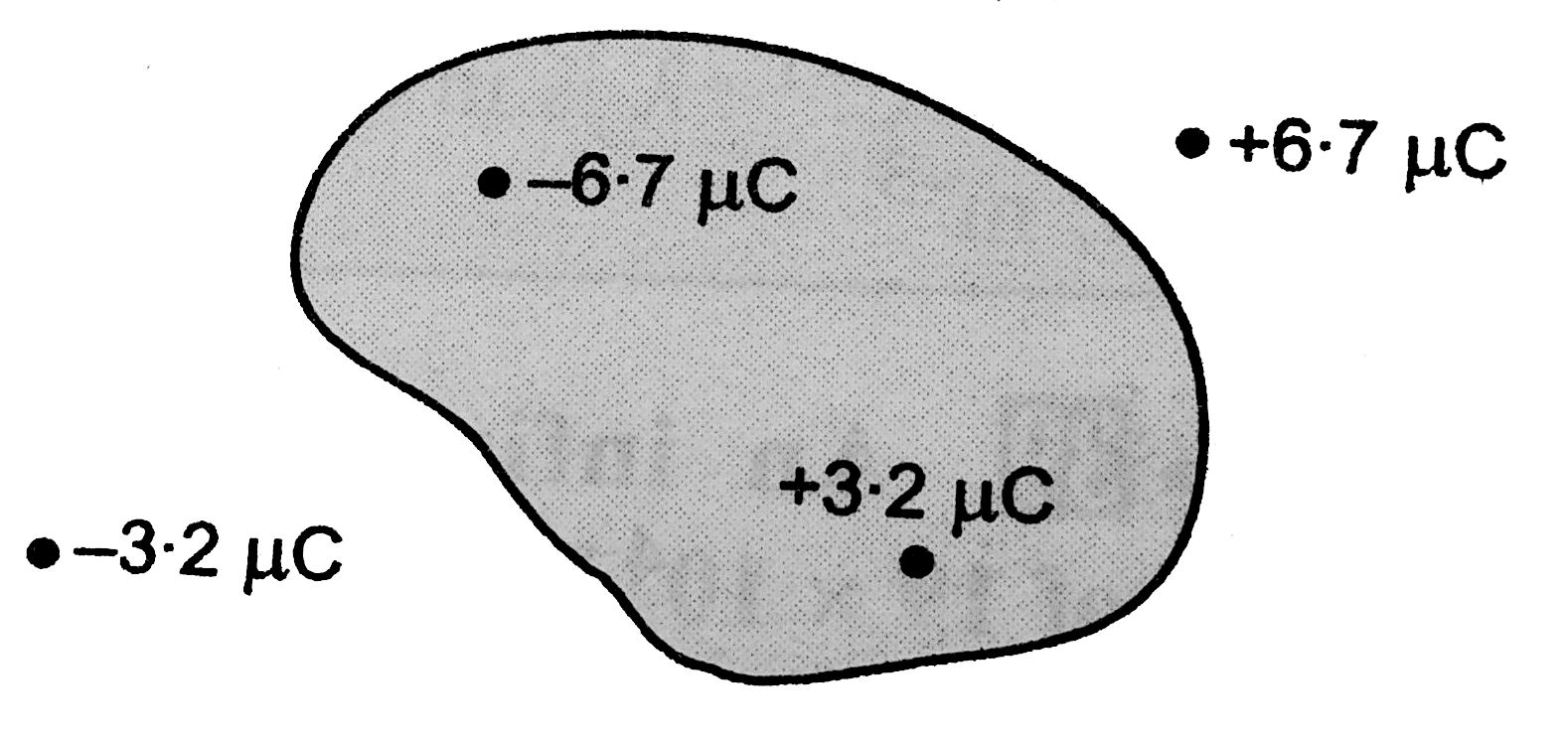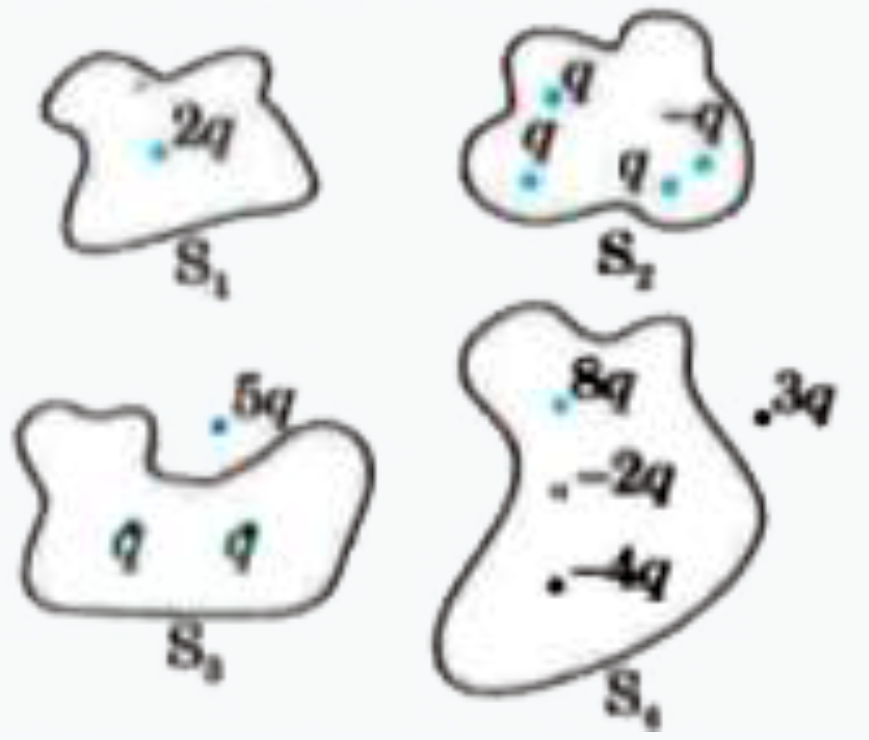The electric flux through the surface

in fig. (iv) is the largest
in fig. (iii) is the least
in fig. (ii) is same as fig.(iii) but is smaller than fig.(iv)
Is the same for all the figures.
The correct Answer is:D
Gauss' law of electrostatics state that the total of the electric flux out of a closed surface is equal to the charge enclosed decided by the permittivity i.e., Q electric Thus, electfi flux through a surface doesn't depend on the shape, size or area of a surafce but it depends on the number of charges enclosed by the surface
So, here in this question, al the figures same electric flux as all of them has single positive charge.
Topper's Solved these Questions
Similar Questions
A thin straight infinitely long conducting wire having charge density λ enclosed bya cylindrical surface of radius r and length lr, its axis coinciding with the length of the wire. Find the expression for the electric flux through the surface of the cylinder.
View SolutionA thin straight infinitely long conducting wire having charge density λ is enclosed by a cylinder surface of radius r and length l, its axis coinciding with the length of the wire. Find the expression for the electric flux through the surface of the cylinder.
View Solution
Knowledge Check
A plane surface of element of area 1mm2 is situated in a uniform electric field of intensity 9×106N/C with its plane making an angle of 30∘ with the direction of the field. The electric flux through the surface element is
A4.5Nm2/CB3.5Nm2/CC0.5Nm2/CD2.5Nm2/CA cubical guassian surface encloses 24 C of charge. The electric flux through each surface of the cube is
A24ε0V−mB4ε0V−mC12ε0V−mD2.4ε0V−mIn a region of space, the electric field is given by →E=8ˆi+4ˆj+3ˆk. The electric flux through a surface of area 100 units in the xy plane is
A800 unitsB300 unitsC400 unitsD1500 units
An arbitrary surface encloses a dipole. What is the electric flux through this surface ?
View SolutionFig shows a closed surface surrounding some electric charges (a) what is the net electric flux through the surface? (b) Is the electric flux directed inward or outward from the surface ?

View SolutionFour closed surfaces and corresponding charge distributions are shown below.

Let the respective electric fluxes through the surface be ϕ1,ϕ2,ϕ3 and ϕ4.Then:
View SolutionA point charge of 4.427 μC is at the centre of a cube Gaussian surface 9.0 cm on the edge. Find the net electric flux through the surface. (ε0=8.854×10−12C2N−1m−2)
View SolutionAn arbitary surface enclose an electric dipole of dipole moment 20×10−6 C-m, What is the electric flux through this surface?
View Solution
